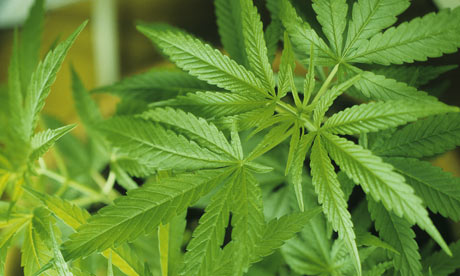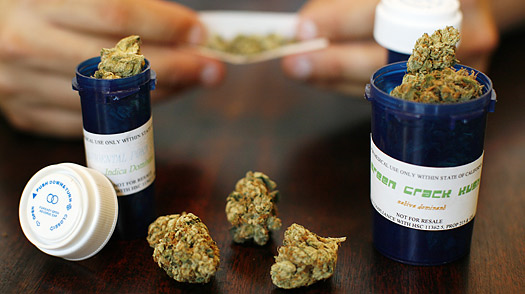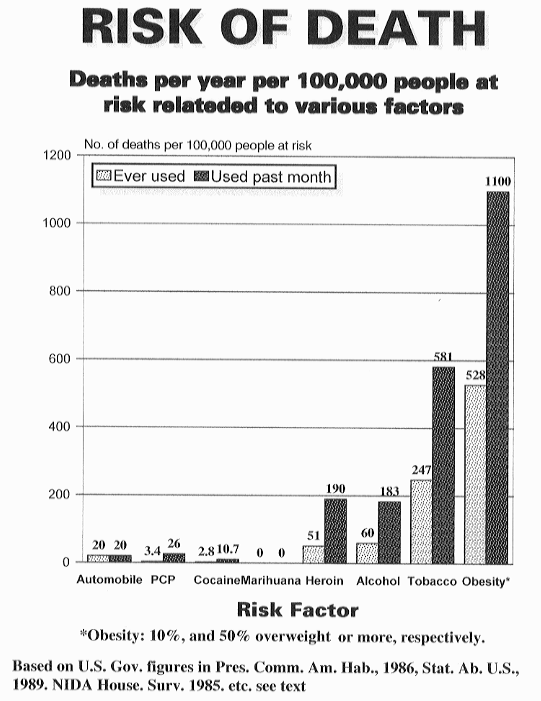Introduction
The battle against illegal drugs is one of the most costly wars a country can venture on. This is because, apart from costs associated with the venture, when it comes to arrests, the prosecution process, and prison costs, the war denies a country’s medical sector a chance of exploiting the medicinal part of some illegalized drugs, for example, Marijuana. In addition, considering the amount of revenue, which a country can gain via taxes, the war has many associated losses than gains.
Although this is the case, it is important to note that, to some extent, the prohibition of illegal drug use has many associated benefits, considering the effects of some drugs on individuals. However, it is important to remember that the use or selling of some illegal drugs, for example, Marijuana has many benefits than negative effects, a fact that makes it necessary for governments to legalize its use.
Background information
Marijuana is one of the most commonly used illegal drugs on the American continent. From statistics, more than sixty-five million Americans at some point in their lives have used the Drug, a factor many attributes to its mild effects on users. Although this is the case, the use of such a drug is a criminal offense, which is prosecutable in a court of law. It is necessary to note that such prohibitions have not limited its wide use among the American citizenry, a fact that many associates with its medicinal importance.
The war against Marijuana traces its origin from the Chinese empire, where inhabitants used it as a pain remedy. Because of the nature of movements during the colonial period, its use moved very fast to other corners of the world, where America is inclusive; as a result, the establishment of the British colonies. In the early years of its use, the majority of individuals, more so medical practitioners, used it as a pain remedy and as an appetite-triggering factor, although some individuals used it for pleasure purposes. As a result, of its increased use and abuse, the federal government sought to reduce its use through the Marijuana Tax Act that the government put into use in 1937.
Such efforts gained little due to great antagonism the act faced from members of the medical society. Effecting of jail terms and the use of heavy fines accompanied the adoption of the tax measure hence, making the life of marijuana users very hard. Adoption of the Controlled Substance Act by the federal government boosted the war against its use; due to the categorization of the Drug with other drugs, the federal government considered “the schedule 1” drugs, for example, Cocaine. Due to many protests against its illegalization, there was a policy change, which depended on a state’s acceptance or denial of its use later on.
Such provisions were short-lived because, in 1980, President Reagan prohibited its use, a case that happened in the subsequent governments, primarily the Bush’s (senior) administration. Since then, many changes have occurred in the Marijuana legislation debate because some states permit its medical uses, for example, California, whereas other states up to today remain adamant about changing the marijuana legislation (Institute of Medicine, 2010, Para. 1).
Pictorial Representations of the Drug


Why legalize Marijuana?
This is one of the most raging debates in many societies, the U.S., in particular. This is because, as compared to other commonly legalized and abused drugs, for example, nicotine products, this Drug has fewer associated side effects and negative impacts on individuals. This is a fact proved by researches, where there is a clear indication of minimal risks associated with the Use of Marijuana when compared to other legalized substances abused mostly by individuals (Schaffer, 2010, p.1).
Mortality Comparison Graphs


Apart from such minimal death numbers associated with the use of Marijuana, it is important to note that this Drug is very significant economically, socially, and in the health sector. This is a fact that federal governments have failed to recognize because of the apparent divisions that exist as concerns the political ideologies on the legalization and the illegalization of Marijuana use. That is, each section of the political divide presents different views as concerns the adoption of laws, which are crucial as concerns its legalization. Another primary point which antagonist of the legalization debate fails to recognize is that the federal government uses many resources in taming drug use.
Marijuana has many associated significances that range from the economic perspective to the health dimension. To start with, this Drug is essential medically in the war against some very dangerous diseases. Before venturing into the medicinal importance of the Drug, it is important to note that, medically, this Drug is not very dangerous when comparing its health effects to health effects resulting from other age-legalized substances, for example, alcohol.
In terms of medical care, this Drug has many uses that include its use as an appetite stimulator, nausea remedy, mostly during chemotherapy, analgesic remedy. In addition to this, medics use this Drug in the treatment of Glaucoma, Huntington’s chorea, Spinal cord injuries, and in some cases, medics can use it in the treatment of multiple sclerosis. On the other hand, Marijuana plays a central role when it comes to the treatment of brain tumors (Louie, 2005, p.1).
During cancer chemotherapy, because of the adverse nature of the chemicals used, this Drug acts as a remedy to nauseate feelings associated with such a process. Many medics call it a lifesaver primarily because; most chemotherapy drugs have extremely depressing side effects associated with eating problems. Due to such effects, the majority of individuals may stop attending to such therapies, a factor that shortens their lifespan, hence the importance of Marijuana in this sector.
As concerns the treatment of Multiple Sclerosis (M.S.), this Drug plays a crucial role when it comes to treating problems associated with this medical complication, for example, muscle spasms, speech and sight problems, muscle shivers, and bladder control difficulties. Although some individuals may argue that there exist other drugs, which heal the same effects, scientific researchers have proved that cannabis is more effective because of its long-lasting effects.
When it comes to glaucoma, the majority of the recommended treatment remedies have very many associated resultant effects, a fact that this Drug eliminates because of its long-lasting effects, as concerns the restoration of the eyesight (Concept420, 2010, p.1). Other medical applications that exist in common health scenarios include helping HIV and AIDS patients to deal with uncontrolled weigh problems, primary those suffering from the AIDS wasting syndrome (Joy & Mack, 2001, pp. 86-95 and Forgaty, Rawstorne, Prestage, Crawford, Grierson & Kiprax, 2007, pp. 296-299).
Combining all these facts clearly illustrates how important cannabis is important when it comes to any citizen’s health, ranging from young children to the old aged. In this regard, one ethical question arises; why should a government that is fighting to ensure it maintains a healthy citizenry illegalize the use of one of the most important medical remedies? This is because, as a medical drug, Marijuana is one of the contributing factors to a healthy citizenry. Such healthy populations contribute a lot when it to the economic development of any nation, directly through active participation in jobs and indirectly through saving millions of dollars that the federal government spends annually on the health sector.
Economically, Marijuana is very crucial. That is, the federal government spends many millions in taming its use, forgetting that there can be very many tax gains out of legalizing its use. The Drug has a very high value when comparing its production and selling costs. Although many may argue that such prices are soaring because of its illegality hence, dealers are few; it is important to note that, considering its wide use, control of such a trade can earn the government a lot of revenue, in addition, to save the millions that it spends in taming its use. The government spends such a huge amount of fees on hiring advocates to sustain court procedures to keep the prisoners comfortable; in terms of housing, food, and health care.
For example, in a time span of 25 years from 1965, Marijuana arrest numbers soured from the previous number (eleven million in 1965) to twenty million (in 1990). Currently, expenses that pertain to the war amount to more than sixty-eight billion American dollars annually, a fact that directly results due to the numerous arrests daily (Wolff, 2009, Para. 8). In addition, when comparing the numbers of drug prisoners in all American prisons, individuals accused of this Drug related offenses account for almost 44% of the overall number of individuals arrested on drug counts. For example, in 2006 only, there were approximately 830 000 Marijuana arrests (a figure that is very abnormally high). As ascertained by the uniform crime figures, this was an almost fifteen percent increase from the number of such arrests in the previous year (Dubner, 2007, Para. 11).
Such numbers clearly indicate how much the federal government overspends in one section of the judicial system; taming of Marijuana (Cables News Network: CNN, 2009, p.1). In addition, such as the expense in the police department because police systems need continuous upgrading in order to net current trends in the Marijuana business. The government loses as a result of the war on drugs amount to almost $ 7.7 million, a figure that keeps on increasing as the drug selling syndicate changes.
On the other hand, the federal government spends approximately six hundred and thirty million American dollars in taming the vice in schools through educational programs on the negative effects of drug use, programs that have failed to achieve their mandates. Therefore, considering these expenses and the prevalent global economic crisis facing nations, where the U.S. is included, the federal government can utilize such funds in other developmental projects, which enhance the quality of life of the American citizenry (Dubner, 2007, p.1).
In addition to the many funds, which the federal government can save out of legalizing Marijuana, the whole idea is very important from a tax-revenue gain perspective. Such gains are apparent in California, one of the few states, which have legalized its usage in medical fields. As reported by Wolff (2009, Para. 7), the state gets almost $ 1.4 million. It is important to note here that such gains are due to partial legalization because the federal government has prohibited such sales. Further, Wolff adds, if the current call for legalization sails through, the government is bound to increase its revenue from its sales to approximately fourteen million dollars annually.
Considering such gains, the likelihoods of more gains to the federal government’s revenue scheme are high, considering that this will be a national thing and not a single state issue. This is because, considering the fact that, currently, U.S. citizens spend more than eleven billion on the Drug annually, subsequent legalization and taxation of each consumer can result in a $ 660 million gain annually. It is important to note here that such figures are mere approximations; hence, the likelihoods of more gains are high with the legalizing of its sales. This, in many ways, is very important in alleviating the budgetary deficits, which may occur.
Another important reason why the government should prohibit its use is that the war against its use has gained little, as concerns the reduction of its use. No one can deny that its abuse is very prevalent in most American schools, more so high schools. The majority of individuals attribute this fact on the premise that the law prohibits the selling of some other legalized substances, for example, alcohol and cigarettes to minors (individuals under the age of twenty-one years).
However, because such laws do not exist when it comes to Marijuana’s selling, but rather the law prohibits its use completely, the issue of age is of little significance to most dealers; hence, any student s can obtain it at their own convenience or pleasure. This largely put at stake governmental efforts of reducing the abuse of substances considered harmful to one’s health. As the Marijuana Legalization Organization (2010, p.1) argues, instead of prohibiting the use of this like a drug, the government should legalize its use but put in place required educational programs and other regulating policies. Such regulating policies are crucial as a prevention mechanism of keeping the youths away from drugs.
On the other hand, as concerns, the little achievement of this form of prohibitory legislation, provisions in the current existing cannabis prohibiting laws have less consideration as concerns the drug rehabilitation programs. This is because; such the existing prohibitory laws have specifications about penalties and jail terms hence, ignoring the fact that most of those convicted individuals are addicts who need serious medical and psychological help.
Conclusion
In conclusion, considering the many economic, health, and social gains, which may result as a product of legalizing Marijuana, it is very important for the federal government to weigh such gains, hence legalize its usage. This is because, Marijuana, although a drug considered illegal, has no adverse effects on individual health as compared to other federal age-legalized drugs. For the achievement of all these gains, it is important for the federal government to take precautions on the many facts that surround its legalization, for example, recommended uses and age considerations.
Reference List
Cables News Network: CNN. (2009). Legislators aim to snuff out penalties for pot use. CNN.
Concept420. (2010). Medical Marijuana Uses. Concept420. Web.
Dubner, S. (2007). On the legalization-or not-of Marijuana. New York Times.
Fogarty, A., Rawstorne, P., Prestage, G., Crawford, J., Grierson, J., & Kippax, S. (2007). Marijuana as therapy for people living with HIV/ AIDS: social and health impacts, AIDS care, 19(2), 295-301.
Institute of Medicine. (2010). what is the problem? History and background of Marijuana. Duke.edu. Web.
Joy, E J., & Mack, A. (2001). Marijuana as medicine?: the science beyond controversy.Washington; National academic Press.
Louie, W. (2005). Clinical uses of Marijuana. Altmed. Web.
Marijuana Legalization Organization. (2010). Why Marijuana should be legal. MLO.
Nasaw, D. (2009). Could marijuana tax shore up California’s finances? Guardian.
Schaffer, C. A. (2010). Basic facts about the war on drugs. Schaffer Library of Drug Policy.
Stateman, A. (2009). Can Marijuana rescue California’s economy? Time Magazine. Web.
Wolff, M. (2009). Legalizing marijuana can reduce crime, increase revenue for state. Daily Sundial. Web.